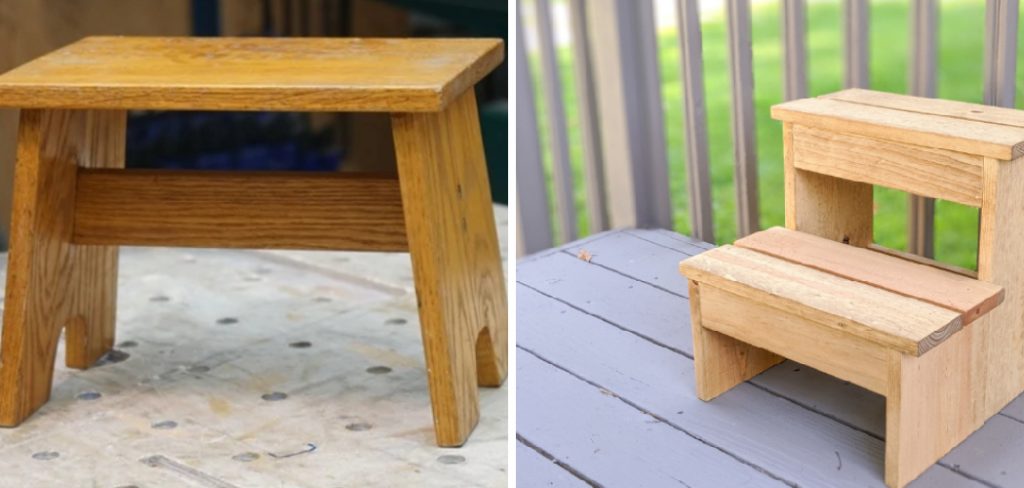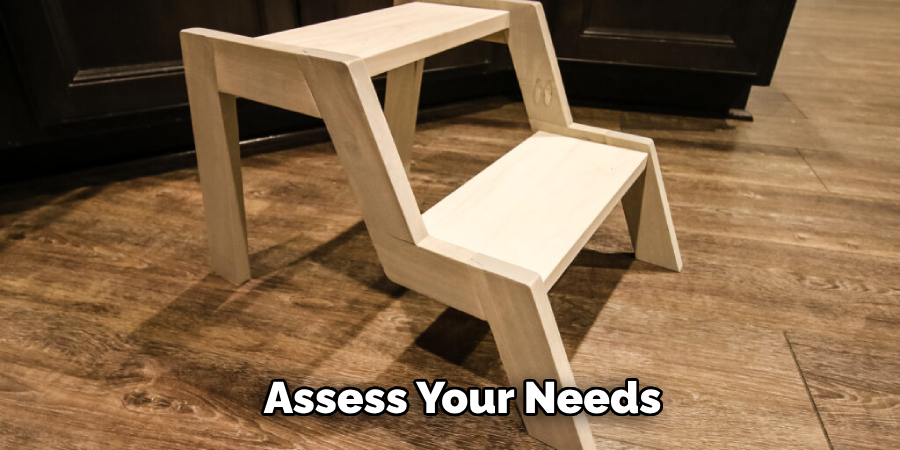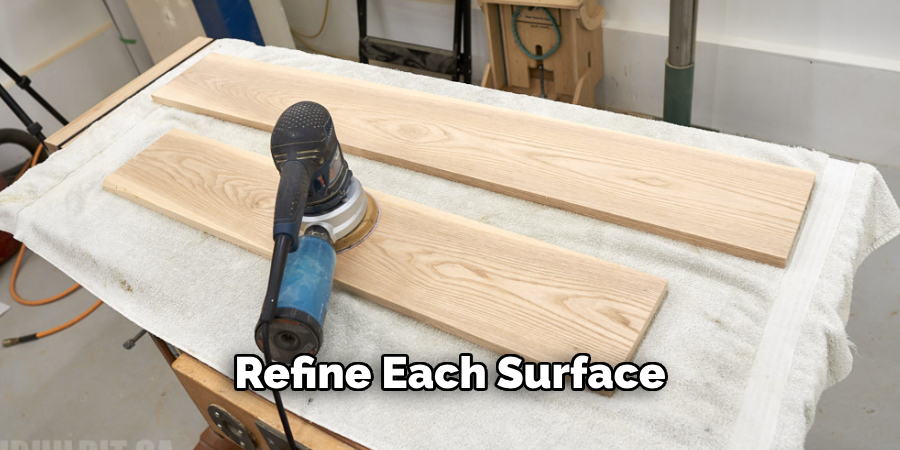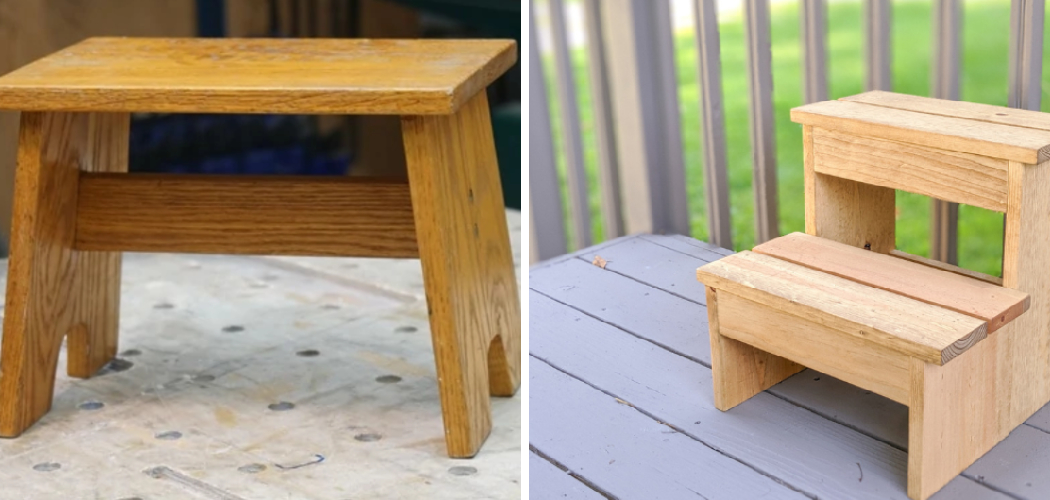Crafting your own step stool is a practical woodworking project that can enhance accessibility and functionality in your home. Whether you need an extra boost to reach high shelves, or a sturdy platform for various tasks, knowing how to build a step stool allows you to create a customized solution tailored to your needs.

In this comprehensive guide, we’ll explore the step-by-step process of how to build step stool, from selecting the right type of wood and designing the stool to cutting, assembling, and finishing it. We’ll cover various styles and sizes of step stools, as well as tips for safety, stability, and customization. Join us as we delve into the details of creating a versatile and durable step stool that not only serves its purpose but also becomes a cherished piece of your home furniture.
Importance of a Step Stool for Accessibility and Convenience
A step stool is an essential tool for improving accessibility and convenience in any household. For individuals of all ages and abilities, a step stool provides a simple yet effective solution to reach objects stored in elevated places, such as kitchen cabinets, closets, or top shelves. It eliminates the need to stretch unsafely or climb onto unstable furniture, significantly reducing the risk of falls and injuries.
Additionally, step stools are invaluable for performing various tasks such as changing light bulbs, cleaning high surfaces, or assisting children in reaching sinks and countertops. By offering stability and safety, a well-constructed step stool enhances day-to-day living, making it easier to accomplish chores and access items without hassle. Whether it’s a small foldable design for easy storage or a more robust and decorative piece, the practicality and necessity of a step stool in ensuring accessibility and convenience within a home cannot be understated.
Assessing Your Needs
Before embarking on the project of building a step stool, it’s crucial to assess your specific needs and requirements. Consider the primary purpose of the stool—whether it’s for reaching high shelves in the kitchen, providing children with access to the sink, or aiding in other household tasks. This will help determine the appropriate height and size of the stool.
Think about the environment where the step stool will be used. Will it be stored in a small space where a foldable design might be beneficial, or is there sufficient room for a more permanent, sturdier piece? Additionally, consider who will be using the stool. If children or elderly individuals will frequently use it, prioritize safety features such as non-slip surfaces and secure handrails. Assessing these factors beforehand ensures that the final product meets all functional and safety requirements, leading to a more satisfactory and effective step stool.

10 Methods How to Build Step Stool
Method 1: Conceptualize the Design
The genesis of any woodworking project lies in the fertile soil of imagination. Begin your journey by conceptualizing the design of your step stool, envisioning its form, dimensions, and aesthetic appeal. Will it be a simple two-step design or a multifaceted masterpiece with intricate carvings? Allow your creativity to roam freely as you sketch out your vision, laying the groundwork for the artistic symphony that is to follow.
Method 2: Select Your Materials
With your design taking shape, turn your attention to selecting the materials that will bring it to life. Wood, with its warmth and versatility, is a perennial favorite for step stool construction, but metal or plastic may also serve your purposes depending on your preferences and needs. Consider factors such as durability, aesthetics, and workability as you peruse the myriad options available.
Method 3: Gather Your Tools and Supplies
No artisan is complete without their tools, and woodworking is no exception. Arm yourself with a comprehensive array of implements – saws, drills, chisels, and sanders – each poised to play its part in the symphony of creation. Take stock of your supplies as well, ensuring that you have all the necessary materials, fasteners, and finishes at your disposal before embarking on your woodworking odyssey.

Method 4: Measure Twice, Cut Once
As the adage goes, measure twice, cut once – sage advice that rings true in the hallowed halls of woodworking. Take precise measurements of your materials, ensuring accuracy to the fraction of an inch. With steady hands and unwavering focus, wield your saw to carve the raw materials into the sinuous contours that shall define your step stool’s silhouette, remembering always to err on the side of caution.
Method 5: Joinery: The Art of Connection
With your pieces cut to size, turn your attention to the art of joinery – the sacred bond that shall unite them as one. Whether employing the timeless elegance of dovetail joints or the steadfast reliability of mortise and tenon, let each connection be a testament to your mastery of the craft. With patience and precision, guide your tools to fashion joints that are as sturdy as they are beautiful.
Method 6: Carve, Shape, and Sculpt
With the foundation laid, unleash your creativity upon the raw canvas of your step stool, carving, shaping, and sculpting it into a work of art. Let each stroke of your chisel be imbued with purpose and intent, as you breathe life into the wood, coaxing forth its inherent beauty. Whether adding decorative flourishes or refining the ergonomics of your design, let your imagination be your guide.
Method 7: Sand, Smooth, and Refine
As the contours of your step stool take shape, turn your attention to the finer details – sanding, smoothing, and refining each surface to perfection. With each pass of sandpaper, erase the imperfections of the past, revealing the true splendor of the wood beneath. Let your hands be your guide as you caress the surface, ensuring a finish that is as silky smooth as it is visually stunning.

Method 8: Finish: Anointing with Elegance
With the construction complete, it is time to anoint your creation with the final flourish – the finish. Whether applying a coat of stain to accentuate the wood’s natural beauty or adding a protective layer of varnish to safeguard it from the ravages of time, let each brushstroke be a testament to your reverence for the craft. As the finish dries, watch as your step stool is transformed from a mere object into a work of art.
Method 9: Test and Validate
Before entrusting your step stool with the weight of human endeavor, subject it to rigorous testing and validation. Ascend its steps with confidence, feeling the solidity of its construction beneath your feet. Let each footfall be a validation of your craftsmanship, ensuring that your creation is as functional as it is beautiful. Make any necessary adjustments, iterating upon your design until it meets your exacting standards.
Method 10: Embrace and Share
As you bask in the glow of creative fulfillment, embrace the joy of your accomplishment and share it with the world. Whether gracing the halls of your home or the workshop of a fellow artisan, let your step stool be a beacon of inspiration, inviting all who behold it to marvel at the boundless horizons of possibility that await the daring soul who dares to dream. Let your creation serve as a testament to the enduring power of craftsmanship and the indomitable spirit of human creativity.
Common Mistakes to Avoid
When embarking on any new journey, it’s crucial to be aware of common pitfalls to ensure success. This is particularly true whether you’re starting a new project, learning a new skill, or implementing a new habit. One frequent mistake is setting unrealistic goals that are overly ambitious, leading to frustration and burnout. It’s important to break larger objectives into manageable steps.
Another common error is neglecting the importance of a solid plan, thinking you can improvise as you go; good preparation is key to avoiding unnecessary setbacks. Additionally, many fail to seek advice or feedback from more experienced individuals, which can provide invaluable insights and prevent costly mistakes. Recognizing and avoiding these common mistakes can significantly enhance your chances of achieving your desired outcomes.

Conclusion
Crafting a step stool through the art of woodworking is a journey that blends creativity, skill, and sheer dedication. From conceptualizing the design to selecting the finest materials, from the meticulous precision of measurement to the masterful execution of joinery, each step is an invitation to create something both functional and beautiful. The process not only sharpens your craftsmanship but also fosters a deep appreciation for the timeless elegance of handmade pieces.
Testing and refining your creation ensures its durability and safety, while sharing your work celebrates the spirit of artistry and ingenuity. Ultimately, the satisfaction derived from building your step stool transcends the physical object, embedding within it a piece of your passion and artistry that can be cherished and admired for generations to come. Now that you know how to build step stool. While it does take a few steps each time, hopefully now you understand the process and why it’s worth taking the extra step to make sure your floor is properly cared for. So don’t wait any longer, take action today!
